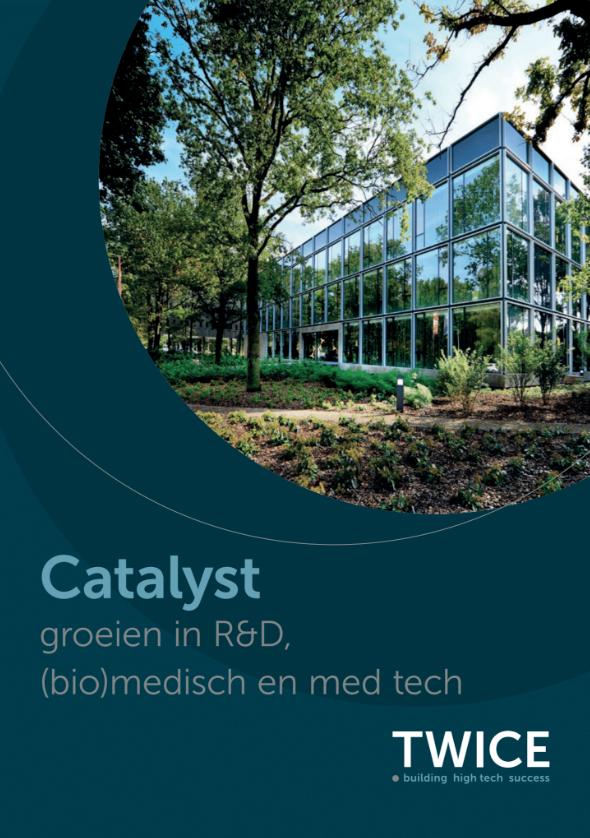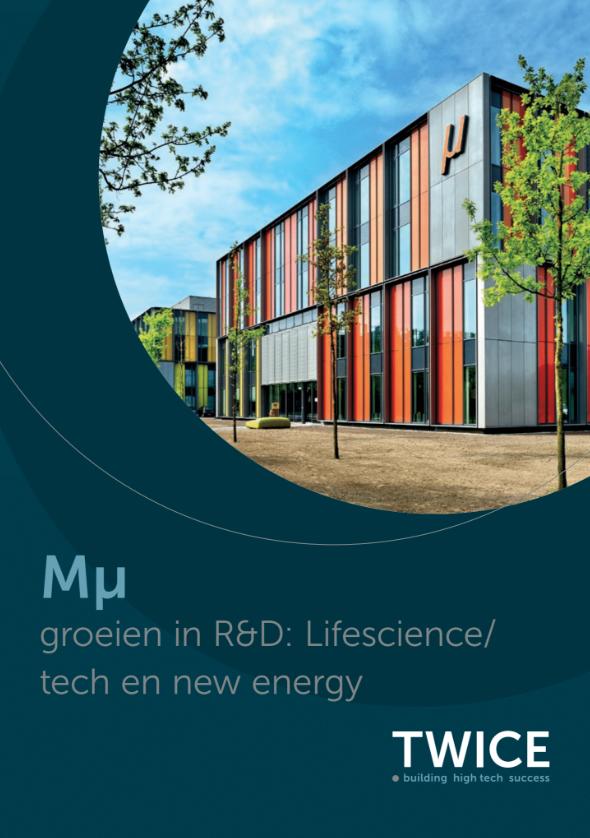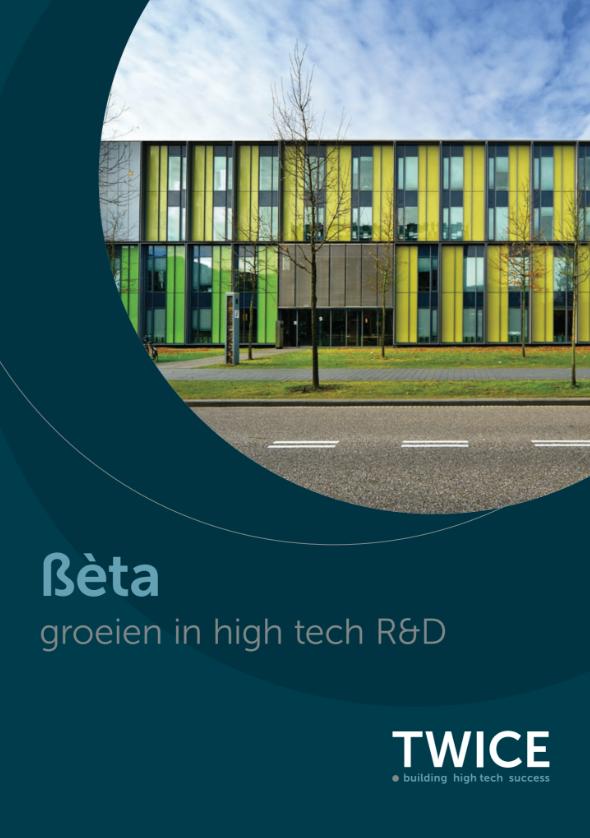In veel bedrijven wordt de waarde van de werkvloer onvoldoende benut. Daardoor mislukken verbeterprojecten, leveren grote investeringen niet voldoende op en blijven suboptimale processen in stand. De oplossing is simpel: luister naar de operatie, betrek hen bij projecten, faciliteer hun inbreng. Hoe organiseer je die betrokkenheid en wat levert dat draagvlak op? Robert Bouwman, mede-oprichter en eigenaar van EZ Factory, gevestigd in hub Beta, vertelt erover in dit interview met Philippe Hameleers, projectmanager bij Kwattaas.
EZ factory ontwikkelt apps waarmee operators gemakkelijk autonoom onderhoud kunnen uitvoeren en managen. Met deze tool kunnen operators effectiever en efficiënter werken en verbeteren zij zelf continu de operationele processen. Philippe Hameleers voert vanuit Kwattaas verbeterprojecten uit in de industrie en was eerder productiemanager bij Tata Steel. In zijn aanpak staat het betrekken van alle niveaus in de organisatie centraal. Robert en Philippe delen in dit artikel hun ervaringen en geven tips.
De waarde van de werkvloer
Als we het over de werkvloer hebben, wat bedoelen we dan eigenlijk? Philippe Hameleers is er heel duidelijk over: ‘De werkvloer is de plek waar de meeste waarde wordt toegevoegd in een bedrijf. Hier wordt daadwerkelijk iets gemaakt. Mensen zijn eerlijk en reageren vooral met emotie en gevoel op zaken die hen aan het hart gaan: hun eigen dagelijkse werkzaamheden. Het is de belangrijkste plek van het hele bedrijf.’ En toch, als het om grote beslissingen of verbeteringen gaat, lijkt deze belangrijke groep uit het oog verloren te raken. Robert ziet het in de praktijk geregeld gebeuren: ‘Dan wordt er door een technisch team een prachtige tool ontwikkeld voor de productie, zonder de operators daarbij te betrekken. Zo gaat die tool niet opleveren wat je verwacht. Enerzijds omdat je waarschijnlijke cruciale informatie hebt gemist bij de ontwikkeling en anderzijds omdat er geen draagvlak voor is.’ Philippe: ‘Dat komt omdat de kennis en ervaring van de werkvloer nog vaak onderschat wordt.’

Intrinsieke motivatie
‘Dat onderschatten kost ontzettend veel tijd en geld,’ vervolgt Robert. Vaak wordt vergeten dat er aan operators ook een berg ervaring, kennis en inzicht verbonden is. Je hebt namelijk de mensen nodig die alle praktische kanten van de verschillende bedrijfsprocessen door en door kennen om tot goede verbeteringen te komen. Anders kan het leiden tot plannen en investeringen die theoretisch logisch lijken, maar de praktijk te veel buiten beschouwing laten.’ Philippe vat het droog samen: ‘Iemand die dertig jaar aan de lijn staat, weet meer van zijn eigen werk dan iemand met een slimme studie die twee jaar op kantoor zit.’ Het is doodzonde, willen de mannen maar zeggen. Robert: ‘Ook omdat je daarmee een enorme energiebron onbenut laat: intrinsieke motivatie. De meeste operators willen hun werk zo goed mogelijk doen, niemand houdt van batches die worden afgekeurd of machines die vastlopen. Als je die motivatie gebruikt, kun je heel veel voor elkaar krijgen.’
Iemand die dertig jaar aan de lijn staat, weet meer van zijn eigen werk dan iemand met een slimme studie die twee jaar op kantoor zit
Waarom gebeurt het niet?
Het klinkt heel logisch, en ook de meeste managementboeken stellen dat het ‘betrekken van de werkvloer’ belangrijk is. Toch blijkt dit bij veel bedrijven in de praktijk weinig te gebeuren, waarom eigenlijk? ‘Sommige managers en ingenieurs denken dat zij alle nodige kennis en informatie wel hebben,’ vertelt Robert. ‘Maar je kunt niet weten wat je niet weet. Ik heb zelf die fout ook gemaakt. Als chemisch technoloog begon ik mijn carrière bij AkzoNobel. Ik ging enthousiast met een vraagstuk aan de slag, bedacht een fantastische oplossing en ging vervolgens aan de mannen van de meetkamer vertellen hoe ze het proces beter konden regelen, zonder dat ik rekening had gehouden met hun praktijk. Ze lachten me hartelijk uit, en terecht. Als manager of ondersteunend staflid kun je veel leren door te luisteren naar de werkvloer. Je helpt de mensen het meeste door ze te faciliteren, en niet door in detail te vertellen hoe ze hun werk moeten doen.’ Philippe ziet nog een andere reden: ‘Managers vinden het soms lastig om de aansluiting te vinden. Ze hebben het druk en laten het rondje op de werkvloer dan wel eens schieten. Dan komen ze een tijd niet op de productie en ineens hebben ze mensen nodig omdat er een probleem is. Betrekken van de werkvloer begint niet als er een probleem is, dat begint juist daarvóór. Een goede persoonlijke band met medewerkers is de basis van elke goede werkrelatie.’
Betrekken van de werkvloer begint niet als er een probleem is, dat begint juist daarvóór. Een goede persoonlijke band met medewerkers is de basis van elke goede werkrelatie.
Hoe pak je het aan?
Dit betekent niet dat je elke dag koffie moet drinken met alle productiemedewerkers of dat je bij elke aanschaf het hele bedrijf bij elkaar moet roepen, maar hoe moet het dan wel? Philippe en Robert komen samen uit op een aantal duidelijke uitgangspunten.
- Begin voor dat er een probleem is
‘Loop geregeld dat rondje over de werkvloer, zorg voor voldoende informeel contact, ten minste met de teamleiders. Dat weet je wat er speelt, en voelen mensen zich betrokken. Eventuele problemen zie je dan eerder en mensen voelen zich serieus genomen wanneer je ermee aan de slag gaat. Dat geldt zowel voor de dagelijkse operatie als voor het gebruik van digitale tools.
- Benoem het probleem vanuit een gezamenlijk perspectief
‘Je wilt dat iedereen mede-eigenaar is van het probleem, dan worden ze ook mede-eigenaar van de oplossing. Dus leg kort uit wat de situatie is en vraag hoe zij dat ervaren. Waar hebben zij last van? Vul dat aan met je eigen analyse: de cijfers, de grafieken, de omstandigheden. Nodig de medewerkers ook uit om dat aan te vullen. Welke informatie hebben zij die jij nog mist? Toets zo ook wat hun gevoel is over deze situatie en hoe ze hun eigen rol zien.’
- Zoek samen naar grondoorzaken
‘Vaak is een probleem slechts een symptoom en ligt de oorzaak dieper. Ga dus in gesprek: heb je dit vaker meegemaakt, waar lag het toen aan? Heb je zelf ideeën over de machines, de materialen, de werkmethoden? Wanneer er een oplossing is bedacht, toets deze dan samen met een of meer operators.’
- Leg een doelstelling neer
‘Bij elk verbeterproject hoort ook een gewenste uitkomst. Maak dat resultaat concreet en kwantificeer het. Het reduceren van productieonderbrekingen vertaal je bijvoorbeeld naar: het aantal storingen van een bepaalde machine in stappen terugbrengen van vijf naar maximaal één keer per dag. Zorg dat je het samen eens bent over een haalbare, maar voldoende ambitieuze doelstelling.’
- Faciliteer: geef de tijd en hulpmiddelen om het te doen
‘Vraag de betrokken personen wat ze nodig hebben om die doelstelling te bereiken. Misschien moet een deel van hun reguliere taken tijdelijk worden overgenomen door iemand anders, of hebben ze bepaalde materialen nodig. Veel projecten lopen stuk omdat een medewerker geacht wordt het naast zijn reguliere werk te doen. Schat dus samen in hoe veel tijd er nodig is om tot de oplossing te komen – en zorg dat je daar de omstandigheden voor creëert.’
- Structureer met stappen en een tijdlijn
‘De belangrijkste taak van een manager bij verbeterprocessen is structureren. Maak een plan, verdeel taken, wees duidelijk over verantwoordelijkheden. Verdeel het project in overzichtelijke stappen met een duidelijke tijdlijn. Stuur daarop, plan de nodige overlegmomenten in. Niet om mensen ter verantwoording te roepen, maar om te toetsen of het naar verwachting loopt, of er nog andere zaken nodig zijn. Schuw ook het persoonlijke contact niet. Vaak zijn operators in dergelijke projectsituaties uit hun comfort zone. Vraag of het lukt, of ze het nog leuk vinden, of er dingen zijn waar je ze bij kunt helpen.’
- Vier het bereiken van tussendoelen
‘Iedereen houdt van resultaat. Door tussentijdse doelen te bepalen, heb je ook geregeld wat te vieren. Doe dat. Benoem de vooruitgang, laat zien hoe je daarmee dichter bij het einddoel komt. Duurt het te lang voordat er concreet resultaat te zien is, dan kun je ervan op aan dat andere prioriteiten de overhand gaan nemen.’
- Evalueer en borg op het juiste niveau
‘Natuurlijk vier je ook het bereiken van het einddoel. Erken de inzet van de betrokkenen, wees daarin niet te zuinig. Maar vergeet ook niet om te borgen. Als het systeem is geïmplementeerd, of het proces is aangepast, of de voorraden zijn verlaagd, hoe houd je dit dan op het goede niveau? Wordt het systeem inderdaad goed gebruikt, werken de processen nu vlekkeloos of worden er andere bottlenecks zichtbaar, blijven die voorraden zo laag en werkt dat optimaal? Creëer daarom ook na het project evaluatiemomenten. Je hoeft daar niet altijd zelf tussen te zitten. Verleg dit na enige tijd naar de reguliere organisatie, maak het bijvoorbeeld onderdeel van het teamoverleg.’
- Stap er tussenuit
‘Een interim manager, of een lijnmanager die een verbeterproject leidt, moet er na een tijdje tussenuit. Dan worden de activiteiten ‘business as usual’. Zorg wel dat de rollen en verantwoordelijkheden goed verdeeld zijn. Kleine verbeteringen zijn een prima onderwerp voor het teamoverleg. Als er na een verbeterproject nog grotere aanpassingen nodig zijn, past dat beter op het MT-niveau. En voor grote structurele zaken, kan een nieuw verbeterproject worden gestart.’
Uitzonderingen
Philippe en Robert erkennen dat er ook uitzonderingen op deze werkwijze zijn. Philippe:
‘In tijden van acute crisis is er geen tijd om zo’n heel democratisch proces te doorlopen. Wanneer de boel spaak loopt, kun je best als een daadkrachtige manager snel maatregelen opleggen, ook als die impopulair zijn. Toch moet je juist in die gevallen een paar dingen niet vergeten. Ten eerste: doe het niet te vaak en stel vast dat het echt niet anders kan. Anders krijg je beslisinflatie en worden dergelijke besluiten snel niet meer serieus genomen. Ten tweede moet je ook bij haastmaatregelen evalueren, naderhand, als de storm geluwd is. Dan leg je uit waarom dit zo gedaan is en wat het heeft opgeleverd. Dit is ook een goed moment om juist weer meer mensen te betrekken. Samen kun je bespreken wat er nodig is om zo’n situatie in de toekomst te voorkomen.’
Het project loopt makkelijker en levert een beter resultaat op, als je zo vroeg mogelijk mensen uit de operatie aan tafel hebt.
Benut dat kapitaal!
Robert ziet nog steeds dat mensen dit lastig vinden, alle voordelen ten spijt. ‘In de industrie willen organisaties vooruit en zijn ze soms bang dat een proces waarbij te veel mensen betrokken zijn, tot onenigheid en vertraging leidt. Dat zou uiteindelijk geld kosten. Toch is het tegendeel vaak waar. Wij zien juist dat het project makkelijker loopt en een beter resultaat oplevert als je zo vroeg mogelijk mensen uit de operatie aan tafel hebt.’ Philippe sluit af: ‘Wij komen als Kwattaas vaak binnen als een project niet lekker van de grond blijkt te komen, of als er problemen zijn. Dan trek je dat het beste vlot door met mensen op alle niveaus te praten, door ze onderdeel te maken van de oplossing, door structuur aan te brengen en te faciliteren. Dan komt er een enorme hoeveelheid kennis, ervaring en energie vrij. Dat is de belangrijkste sleutel tot elk verbeterproject.’






